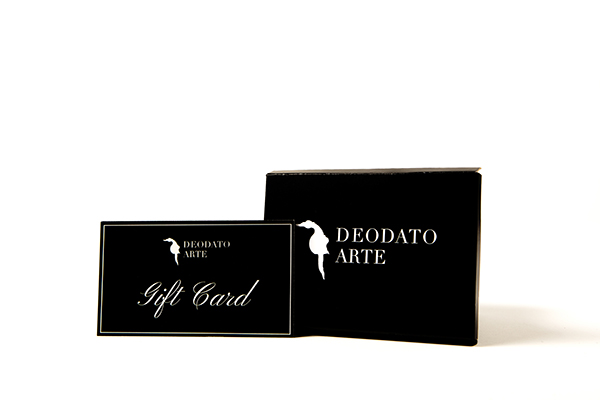
Thank you!

Signed Soups

Andy Warhol: Campbell's Soup - Andy Warhol chooses as the subject of this series of works a commodity in common use and recognisable to the American public. This allows Warhol to transform and elevate a can of soup into a true work of art.
The concept behind Warhol's soups is the 'democratisation' of art, thus bringing it closer to the general public and mass society.
-
-
-
-
-
-
-
-
-
-
-
-
-
-
-
-
-
-
-
-
-
-
-
Big Torn Campbell's Soup Can
Andy Warhol£2,109.45 VAT Margin (art. 36)VAT included
Products with VAT included show a price calculated with VAT tax, so the additional tax of 22% is already added to the price of these products.
VAT Margin
The products with VAT Margin apply the additional tax of 22% only on the margin, the difference between the price at which the product is purchased and the price at which the same product is resold.
10,5 cm x 15 cm
Why does Warhol paint Campbell's Soup Cans?
Campbell like Campbell Jeffrey? Campbell Scott? Campbell Naomi? None of them! Andy Warhol's Campbell's soup takes its name from Joseph A. Campbell, the founder of the company that later became Campbell's Soup.
Warhol paints Campbell's soup cans because they are an immediate and well-known image to the masses. All Americans, on supermarket shelves or on their tables, have seen a Campbell's soup. Warhol himself talks about lunches prepared in 5 minutes with Campbell's soup. Andy Warhol sees in Tomato Soup the perfect symbol of mass culture.
Warhol chooses Campbell's soup cans also for an emotional reason: Warhol's mother used to package tin flowers, flowers made from fruit cans.
Who is Joseph A. Campbell, the creator of Campbell's Soup, Warhol's favorite subject?
In 1867, Joseph A. Campbell founded the Campbell Soup Company, better known as Campbell's. Campbell's cans contain canned tomatoes, vegetables, jellies, soups, dressings, and ground meats.
In 1897, condensed canned soup was born. The Campbell Soup Company thus revolutionized the way Americans had lunch with a food that was quick and easy to prepare, emblematic of the rhythm of the capitalist society that was increasingly asserting itself.
Campbell's Soup Cans: Andy Warhol and the meaning of the artwork
With Campbell's Soup cans, Andy Warhol produces the first serial works. With Campbell's cans, Warhol wants to show that even modernity is worthy of representation. With these works of the Pop Art King, Warhol makes art an expression of the consumer society that characterizes every aspect of everyday life.
The American culture of the sixties thus provides valid inspiration for creating works of art. With his serial portraits, Andy Warhol gives an image to the commercialization and serialization of mass culture.
Andy Warhol's First Exhibition: 32 Campbell's Soup Cans
Irving Blum is the first collector to decide to bet on Campbell's soup. In 1962, Andy Warhol created a series of screenprints featuring Campbell's soup cans. On July 9, 1962, in Los Angeles, the walls of the Ferus Gallery became imaginary shelves with Warhol's painted cans. The 32 canvases of Campbell's Soup Cans show all the variations of canned soup available in the market.
Criticism of Campbell's Soup Cans
Warhol's exhibition in Los Angeles faced strong criticism. Collectors and those looking to invest in art were not convinced by the screenprints with Campbell's cans.
Warhol did nothing but take a commercial product, give it shape in a screenprint, and reproduce it in series. Warhol's soups, however, continue to be produced by the artist in screenprints. At first, the Campbell's Soup cans are perfect and intact. Later, some Campbell's Soup cans appear open, damaged, or with worn labels.
Quotations for Campbell's Soup Cans
Irving Blum, betting on Campbell's soup, made a real deal. Mass culture and the world of contemporary art have over time rewarded Andy Warhol's screenprints. Just like the soup series, Warhol's portraits of Mao, Warhol's flowers, and screenprints of Marilyn have reached increasingly higher quotations.
Auction houses among the most important in the world, such as Sotheby's and Christie’s, have often sold Warhol's works for several million dollars. In 2006, Christie's auctioned off Warhol's Small Torn Campbell's Soup Can for a whopping $11.8 million.
Andy Warhol's Campbell's Soup Cans are now an integral part of pop art and contemporary art history. The screenprints of Campbell's cans, along with the sculptures of Campbell's cans, have been exhibited in all of Warhol's most important exhibitions. Campbell's cans, in addition to being an excellent investment in art, are also a perfect home accessory. The subject and vibrant, pop colors make them perfect for modern homes and kitchen decor.
Campbell Soup is one of Warhol's most well-known and famous subjects. The can of soup from the American brand is emblematic of how the American lifestyle, "the American way," is a condition that involves all social strata.
There are multiple versions of this subject: the mechanism of repetition once again highlights the close connection between art and advertising, the mass consumption, and the artist's analysis of contemporary American society.
Browse through all the Signed Andy Warhol Works available at the Deodato Arte gallery to find the Pop Art master Andy Warhol's work that suits you.











 Register
Register Wishlist
Wishlist Contact Us
Contact Us





















